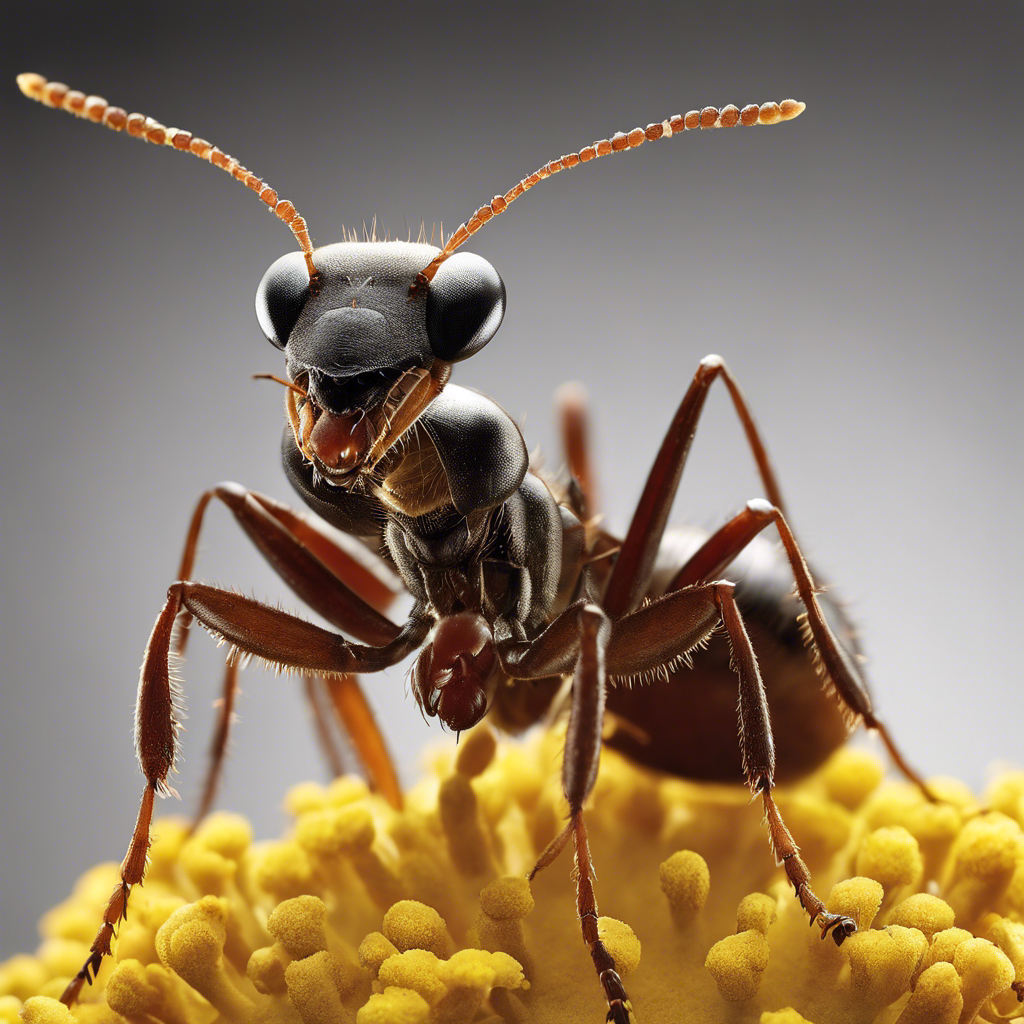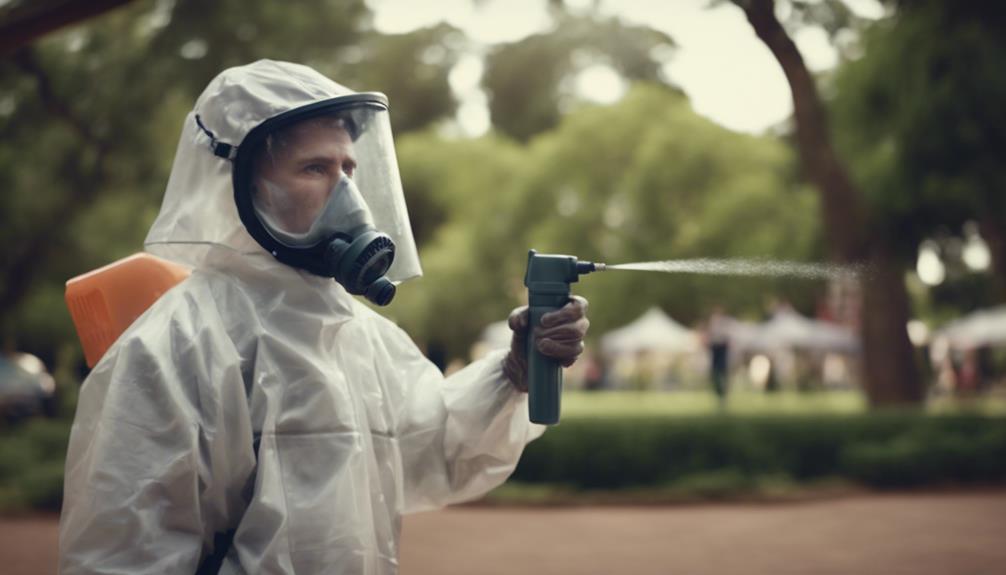Did you know that in St George, ants are not just a pesky annoyance, but they can also pose serious health risks, especially for those with allergies? It’s true.
Certain species of ants can cause allergic reactions, with their venom containing substances that can lead to toxic and even life-threatening responses.
But don’t worry, there are steps you can take to protect yourself and your loved ones.
In this discussion, we will explore the causes and symptoms of ant allergies, identify the specific allergens found in St George, discuss effective management techniques, and provide tips for creating a safer home environment.
So, if you’re curious about how to safeguard against ant-related health risks, keep reading to discover the valuable information that awaits you.
Key Takeaways
- Certain ant species like Solenopsis spp., Myrmecia spp., and Pachycondyla spp. can trigger allergic reactions.
- Ant venom contains substances such as acids and alkaloids, which can cause local reactions like sterile pustules and systemic reactions like anaphylaxis.
- Diagnosis of ant hypersensitivity involves skin testing, serum specific IgE, and sting challenge tests.
- Immediate treatments for ant allergies include epinephrine and corticosteroids, while symptomatic treatments include antihistamines and bronchodilators.
Ant Allergies: Causes and Symptoms
Ant allergies can cause severe reactions, including anaphylaxis and even death, in response to ant stings. Certain ant species, such as Solenopsis spp., Myrmecia spp., and Pachycondyla spp., can trigger allergic reactions.
The venom of ants contains substances like acids and alkaloids, with piperidine alkaloids and low protein contents being responsible for both local reactions, such as sterile pustules, and systemic reactions, like anaphylaxis.
To diagnose ant hypersensitivity, skin testing, serum specific IgE, and sting challenge tests are performed.
Management of ant allergies involves immediate treatments like epinephrine and corticosteroids, as well as symptomatic treatments like antihistamines and bronchodilators. Supportive treatments, such as fluid resuscitation and oxygen therapy, are also utilized.
Preventive measures, including re-sting avoidance and immunotherapy, are essential for long-term management.
It’s important to be aware of the health risks associated with ant allergies.
Identifying Ant Allergens in St George
Identifying the specific ant species responsible for allergic reactions in St. George is of utmost importance in understanding and managing ant allergens in the area. Some species, such as Solenopsis spp., Myrmecia spp., and Pachycondyla spp., are known to cause allergies.
To identify these species, the morphologic structures of worker ants can be evaluated, or molecular techniques can be used. By recognizing the potential allergens present in the region, we can take appropriate measures to minimize the risk of allergic reactions.
Ant venom, which contains substances like acids and alkaloids, can trigger toxic reactions, making it necessary to understand its composition in St. George.
Diagnosis of ant hypersensitivity involves tools such as skin testing, serum specific IgE, and sting challenge tests, which are crucial for identifying and managing ant allergens.
Recognizing and addressing ant allergens in St. George is essential for public health, and proper management includes immediate, symptomatic, supportive, and preventive treatments for allergic reactions caused by ant stings.
Managing Ant Allergies: Prevention and Treatment
To effectively manage ant allergies in St. George, it’s crucial to understand the prevention and treatment options available. Here are three key strategies for managing ant allergies:
-
Pest Control: Implementing effective pest control measures is essential in preventing ant allergies. This includes identifying and eliminating ant colonies in and around your home, as well as sealing off potential entry points to prevent their intrusion.
-
Prevention: Avoiding exposure to allergenic ant species is vital in preventing allergic reactions. This involves learning to identify the specific ant species that may trigger allergies and taking necessary precautions to avoid contact with them.
-
Treatment: In the event of an allergic reaction, prompt medical intervention is necessary. Treatment options may include immediate administration of epinephrine and corticosteroids to alleviate symptoms, as well as antihistamines and bronchodilators for symptomatic relief. Additionally, immunotherapy may be recommended to desensitize individuals with severe ant allergies.
Ant Sting Reactions: Understanding Anaphylaxis
Understanding anaphylaxis in relation to ant sting reactions is crucial for effectively managing and treating allergic responses. Anaphylaxis is a severe and potentially life-threatening allergic reaction that can occur in response to ant stings. Certain ant species have venom that contains substances such as acids and alkaloids, which can lead to toxic reactions, including anaphylaxis.
Diagnosing ant hypersensitivity involves various tests, including skin testing, serum specific IgE, and sting challenge tests. Management of ant sting reactions includes immediate and symptomatic treatments, as well as supportive and preventive measures. Ant allergens and venom composition, such as piperidine alkaloids and low protein content, can cause both local and systemic reactions.
It’s important to be aware of the signs and symptoms of anaphylaxis and seek prompt medical attention if an allergic reaction occurs after an ant sting.
Protecting Against Ant Allergies: Tips for a Safer Home
To create a safer home environment and protect against ant allergies, it’s important to implement various strategies and preventative measures. Here are three tips for a safer home:
-
Seal cracks and gaps in walls and floors: Ants can easily enter your home through small openings. By sealing cracks and gaps, you can prevent their entry and reduce the risk of allergen exposure.
-
Keep food containers tightly sealed and clean up spills promptly: Ants are attracted to food sources and can contaminate them with allergens. By keeping your food containers tightly sealed and cleaning up spills promptly, you can avoid attracting ants and minimize the risk of allergic reactions.
-
Trim vegetation and remove debris: Ants often nest in vegetation and debris around the home. By trimming vegetation and removing debris, you can reduce ant nesting sites and minimize the chances of an infestation.
Frequently Asked Questions
Is an Ant Infestation a Health Risk?
Yes, an ant infestation can be a health risk. Ant bites can cause allergic reactions, including anaphylaxis, and their venom contains toxic substances. In addition, pests like ants can transmit diseases and cause structural damage.
Are There Fire Ants in St George Utah?
Yes, there are fire ants in St. George, Utah. Fire ant bites can cause allergic reactions and discomfort. Effective fire ant control measures are important to minimize the health risks associated with these ants.
How Are Ants Harmful to Humans?
Ants can be harmful to humans due to their venomous bites and stings. They can cause respiratory issues, such as asthma, and skin allergies. It’s important to be cautious and seek medical attention if you experience any adverse reactions.




